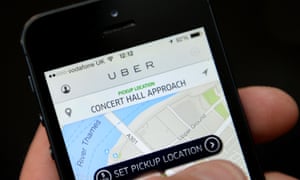When was the last time you heard an engine and knew it was a Cadillac coming down the road?
Not lately, I’d imagine. The Escalade and ATS aren’t exactly the roaring type.
The 2016 Cadillac CTS-V sedan, on the other hand, is. Coming up the driveway or around a bend, that supercharged 6.2-liter V8 sounds like a grizzly bear.

It shouldn’t be too surprising. The third-generation CTS-V shares the same angry engine as the Corvette Z06. It gets 640 horsepower on its 8-speed, automatic, rear-wheel driver, with a 60-mile-per-hour sprint time of 3.6 seconds and an honest-to-goodness top speed of 200mph.
Pushing up the highway last week outside New York, the CTS-V ravaged the road wherever I pointed it. Push the gas and it’ll bound forward, all four corners at once, and devour asphalt as if it’s storing protein for a long winter ahead. It feels big and square to drive; this is no sport coupe. The rear-wheel drive feels powerful, if a little heavy, in a way that could soon define a nouveau Detroit opulence. This would be a good thing.

In fact, those stats put the CTS-V on par with the best sedans from Europe—the $94,100 BMW M5, the $101, 700 Mercedes-Benz E63 AMG, the $141,300 Porsche Panamera Turbo. While it neither performs as excellently as the Panamera nor looks as elegant as the Benz, it belongs right in the thick of the group as the best sedan America can offer.
What You Can Get
The CTS-V is the high-performance version of the CTS sedan, Cadillac’s foray into the luxury sedan market that has been dominated by the Audi, BMW, Mercedes, Porsche, and, to a lesser extent, Lexus and Jaguar. There were two additional body styles besides the sedan—a coupe and a wagon, currently unavailable—and the three constitute Cadillac’s current best hope at full brand revitalization after years of stagnation. (Its formerly-of-Audi boss and upcoming XT5 will have a lot to do with it, too.)

Plenty has been said about the CTS-V’s abilities on the track. (Yes it has launch control; no, it doesn’t have an option for manual transmission.) The steering could be a little more responsive, but the performance traction management, magnetic ride control, limited-slip differential, and massive Brembo brakes manage the car with ease. You’re not going to do any acrobatics with this car (symbolically speaking, that is), but it is straightforward and eager, with body roll almost nil. There is no guile under this hood.
The real question is whether you’re going to want to drive it around town. Are you under the age of 40? If you are, Cadillac is hoping—betting—the answer is yes.

The Looks and the Price
The sticker price will be the first obstacle you’ll face: MSRP on the 2016 model is $84,000, but that number will quickly jump to $90,000-plus once you add certain essentials ($2,300 performance seats, $900 19-inch wheels, $595 red brake calipers). Are you okay with that? It still costs less than its German competitors, but it’s by far the most expensive car Caddy sells. Its entry price beats even the Escalade and is surpassed only by the Platinum edition of that SUV.
Next up is the face. How do you feel about angles? The CTS-V has high-intensity headlamps shaped like long triangles at front; the rear is characterized by a small sport spoiler tilted up at a 45-degree angle and a bottom fender pointing slightly out in the center, like an arrow or the roof of a house. The Cadillac badge just above it has been blown up, sans wreath, more than in previous years—quite the enormous bit of Americana.

Look at the car straight-on, and you’ll see a narrow lattice front grille and long, horizontal air slats that sit between lines bulging up in the carbon fiber hood to accommodate the engine underneath. They form the shape of an H before shooting back past the dorsal fin toward the rear of the car. Steel quad tailpipes at the very back hint at the beautiful sound potential within. (While the angular side mirrors complement the effect, they don’t afford enough visibility.) The look is edgy like a razor, rather than curved, as with the more feline Panamera. CTS-V looks pleasingly modern and unique. You won’t mistake this for anything but a Cadillac. I like it.
Inside the Machine
Inside the car is a different matter. The 8-inch touchscreen and interchangeable instrument cluster certainly look cool, but there’s nothing like repeatedly pushing the inept “touch” screen buttons on the center console—which demand increasingly more frantic bumps in order to take any action—to make you feel insane. Trying to adjust something so simple as the volume proves distracting at best and dangerous at worst. The standard-issue heads-up display, heated mirrors, and auto-dimming mirrors provide some small solace, as do the curbside and rear-view cameras that help with parking.

You’ll find that Bluetooth, Bose surround sound, wireless charging, dual-zone climate settings, passive entry, and remote vehicle start are all standard, as they should be for a car in this price range. Cadillac also includes 20-way heated and ventilated seats in the front, though it would be better if they were totally leather, not just “trimmed.” I am not a fan of “suede” microfiber inserts along the seats and headliner; they feel soft, as if they should be in something a little more sedate, not something with such a serious, aggressive exterior. Other interior dichotomies include the sport alloy pedals that look race-worthy and come standard and the suede microfiber-covered steering wheel and shifter that cost $300 extra and seem out of place.
Still with me? Good. Here’s a further obstacle for you, one that has more to do with convenience than with cash. The car gets 14 miles per gallon in the city. Aside from the cost to your wallet (including the $1,000 federal gas-guzzler toll) and to the environment, that means you’ll be taking frequent stops to replenish fuel. I hate having to stop for gas—just get me in the car, and let’s go—and I suspect you feel the same. This is 2016, very nearly.
There is no excuse for producing such a thirsty turkey

How to Use It
I will note that while that a 14mpg rating lags behind the E63 AMG and even the $79,400 Corvette, it does no worse than the M5 and Panamera Turbo, and it beats the $89,000 Dodge Viper by 2mpg. It certainly beats anything even nearly comparable from the U.S. in terms of performance and practicality.
This is a real American sport sedan that will work admirably as a daily driver while more than keeping up with the Euro whips on the track. And so far, so good: Steve Martin, head of product communications at Cadillac, told me recently that sales of the CTS-V this year have “far exceeded” initial expectations and that “every single” one the company is building right now has someone’s name on it.
“It doesn’t look like that will change any time soon,” he said.
Indeed. If you can stomach the interior inconveniences and you want to get in early on something verging on American greatness, this is the one for you.















